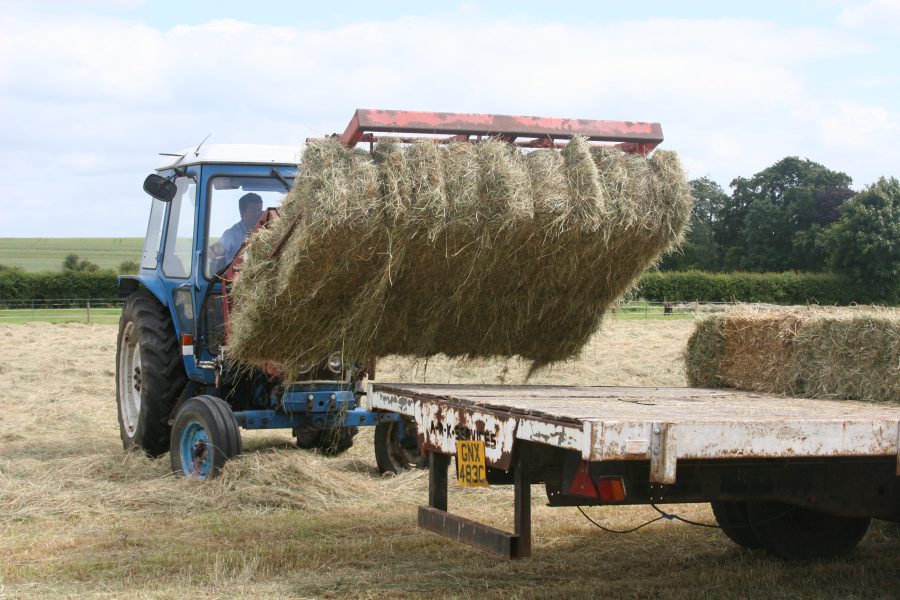Machinery columnist and regular contributor, Jane Brooks, looks at the art of baling hay…
Most smallholders are generally not that well-equipped to handle large square or round bales of hay, whereas the smaller ‘conventional’ sized bales are ideal as they generally fit in a wheelbarrow and can be lifted by hand. Also, what to some seems the black art of haymaking, can be undertaken using older kit and a bit of practice.
Some of my earliest memories are of watching. my father baling hay using an old David Brown baler with a donkey engine in the early 1960s, but by the 1970s he had moved on to New Holland balers and pretty much stuck with them until in the 90s, when my brother introduced a large square baler.
This was perfect for their needs, but no use at all if you didn’t have the right equipment to handle a bale larger and heavier than even the most superhuman of us could lift. Before the introduction of the modern pick-up baler, belt driven stationary balers were used. These were loaded by hand and the hay was literally pressed into an oblong and hand-tied using wire or twine. It was in the late 1930s that tractor pulled pick-up balers that self-fed the windrow into the chamber and automatically knotted the bale came to the market. By the 1950s hay ricks and loose stored hay had become a thing of the past and companies such as The Jones Bros of Wales, New Holland, John Deere, David Brown and International Harvester were offering models all of which made bales that were anything from 18inches wide to 16inches deep and 36 to 40 inches long.
In fact, most conventional balers in use today still can produce similar size bales. Early balers were driven by a donkey engine that was mounted on the baler, but with the advent of pto driven machinery and hydraulics the donkey engine became outdated.
AGRICULTURAL MACHINERY
Balers are now established as an incredibly important piece of agricultural machinery. Practically every single farm animal eats hay and if properly made and looked after, it can provide fodder during harsh winters and late springs.
Hay is generally mowed in June or July, spread to dry, turned and then raked into windrows until it is dry enough to bale.In the 40s and 50s a side-slung sickle bar mower was the option for cutting hay and some classic machinery enthusiasts still use these. However, generally hay is mown with either a drum or a disc mower. In simple terms Hay is mowed when it is about 18inches (46cm) tall and still green. The mower cuts and crimps the grass and it is discharged in a windrow that is around 4ft (1.2m) wide. This row is then spread by a hay-bob (sometimes called a tedder) in a spreading setting to dry out, it’s generally turned once and then, when completely dry, rowed up by the hay-bob, which will have been reset to put the hay crop into rows.
This article extract was taken from the June 2024 edition of The Country Smallholder. To read the article in full, you can buy the issue here.
To receive regular copies of The Country Smallholder magazine featuring more articles like this, subscribe here.
For FREE updates from the world of smallholding, sign up for The Country Smallholder newsletter here.








